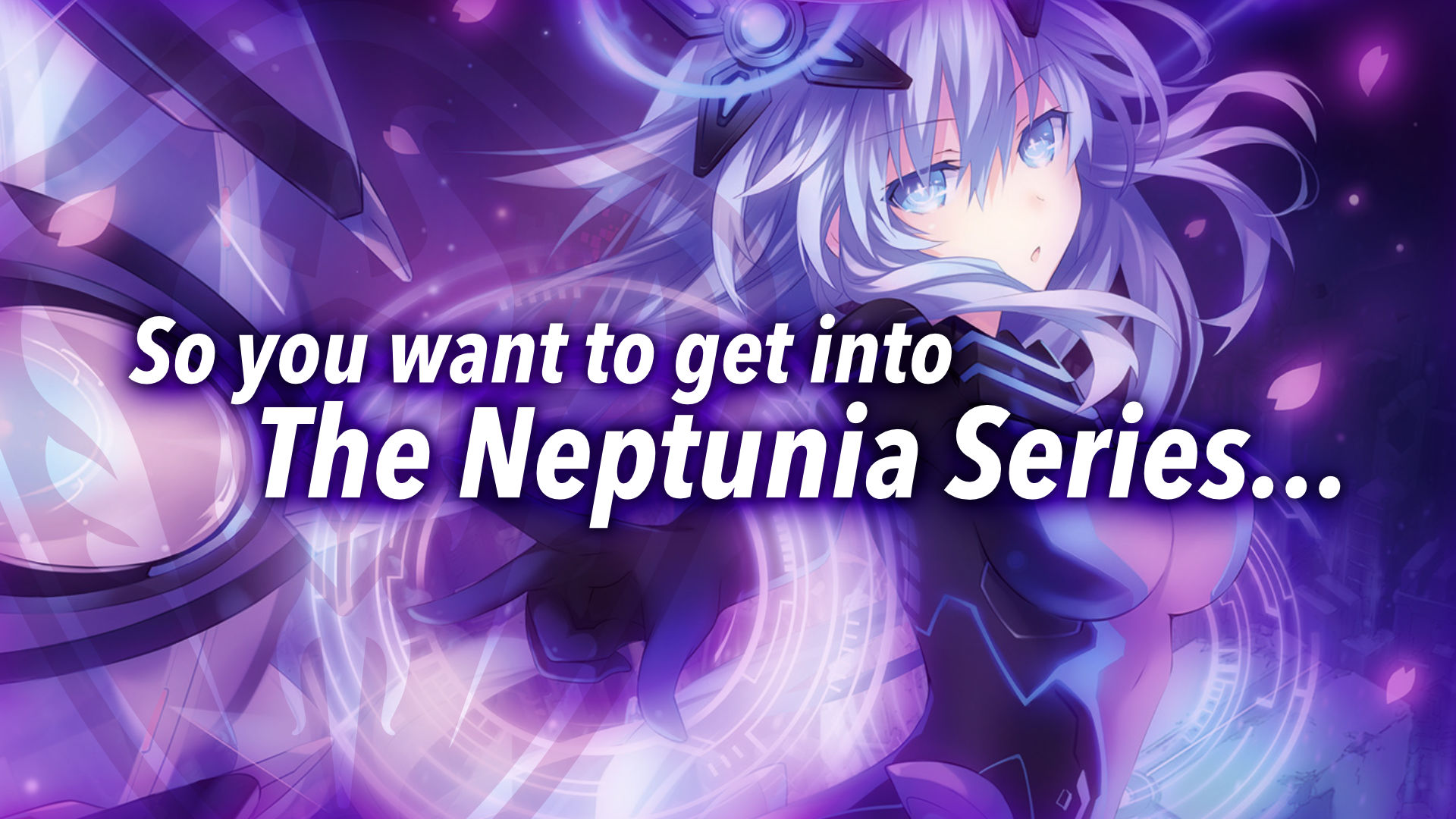Around the mid-2010s, a niche JRPG series began to pick up steam and quickly became (in)famous around the JRPG world. That series was Hyperdimension Neptunia, whose main selling point was its cute characters and commentary on the gaming industry. For most critics, the series was nothing more than a mediocre RPG series that managed to push out multiple games a year. For its fans, though, more games allow more time with a cast of characters that we love. With the series finally slowing down and passing its 10th anniversary back in August, let’s talk about Neptunia as a whole and how someone new to the series can get a good idea of what these games are about… That is why you’re reading this now, right? Oh, I’m breaking the fourth wall right now, you say? Well, that’s just par for the course here.
Neptunia Series Introduction
The Neptunia series got its start in Japan on August 19th, 2010 with the release of Hyperdimension Neptunia on the PS3. “Hyperdimension Neptunia” would be the official name of the series in the West until the release of Megadimension Neptunia VII in 2016. The origins of the series were quite unexpected, with the original vision of the game as a fighting game. Yet, two themes emerged during Neptunia‘s conceptual stage that would define the series for the future:
1. The creator and producer of the Neptunia series, Naoko Mizuno, observed a gap in games available that parodied the gaming industry.
2. While there was plenty of games out there that featured transforming characters, none centered around a group of adorable girl characters.
With those two themes in mind, she created the Neptunia series and started to carve a niche into the gaming world.
The Neptunia games are typically traditional RPGs, with characters roaming around the battlefield to set up their attacks and skills. The exceptions are some of the spin-offs, which explore many genres. Art for the series is drawn by long-time Idea Factory artist Tsunako. For me, art in the Neptunia games stands out and is a major reason I always look forward to new releases. Tsunako has recently left Idea Factory to go freelance, which casts some doubt on whether she will continue to work on Neptunia.
The world of Neptunia is called Gamindustri. The characters all represent either a console, known as Console Patron Units (CPUs or “goddesses” in Japanese), or a company. The series typically follows the namesake CPU Neptune on her misadventures. She is the CPU of the country of Planeptune, with three other nations also represented by CPUs. There’s Noire, the CPU of the country of Lastation; Blanc, who rules over Lowee; and Vert, who watches over Leanbox. I’ll let you figure out what consoles and companies they represent. Neptune herself represents the SEGA Neptune, a console scrapped by SEGA that was meant to be the successor to the Genesis/Mega Drive. Mizuno envisioned a world where SEGA was still in the console race and decided to make their representative the lead character. This, I’m sure, was also to avoid showing any favoritism towards current console makers.
I got into the series right before the anime came out. I binged the PS3 games in two months in early 2013. In the years that followed, I became a Neptunia superfan. I picked up a Vita the following year when the remake of the original Hyperdimension Neptunia came out, and I imported every Neptunia collector’s edition from Japan while still picking up the North American ones when I could. I was in Japan in the summer of 2015 when Megadimension Neptunia VII released, so I picked up the collector’s edition of the game while I was there… and I didn’t even have a PS4 yet. I run a Facebook page dedicated just to Neptunia that has garnered over 10k followers. I rarely get this into individual games, let alone franchises, so this might give you an idea of just HOW into this series I am. It’s a series that warms up my cold, dead heart with its charming characters and generally happy-go-lucky themes. Every release in this series is an instant must-play for me.
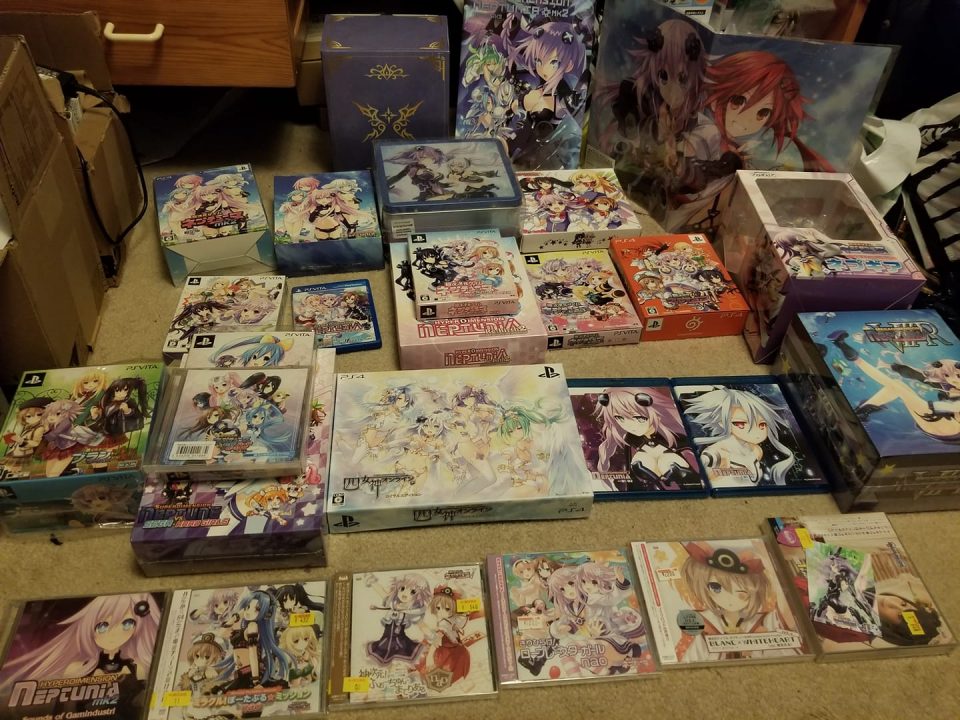
I personally think Neptunia fans stick around mainly for its cast of characters more than anything else. Here’s an introduction to the main cast of the games, most of whom make an appearance in every game in the series. However, the only ones who are guaranteed to appear in every game are the four CPUs.
Character Introductions
Neptune/Purple Heart (Represents the Sega Neptune)
Japanese VA: Rie Tanaka, English VA: Melissa Fahn.
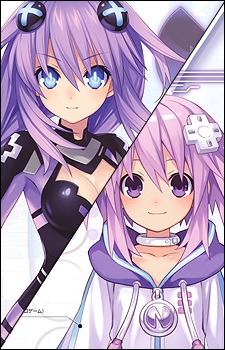
The spunky main protagonist of the Neptunia series and the CPU of Planeptune. Neptune is known for her infectiously cheery and carefree personality, which rarely breaks even in the direst circumstances. Neptune is generally regarded as lazy, and the people of Planeptune enjoy the easy lifestyle she provides for them. She is constantly scolded by those with a higher sense of responsibility to work harder, especially Planeptune’s Oracle, Histoire. Under her playful personality is a strong spirit, and she will always fight to protect what loves: her friends.
Her CPU form, Purple Heart, has a very different personality. Purple Heart is serious, calculating, and regarded as the most powerful CPU of the four. Neptune/Purple Heart’s split personalities are the most drastic of the CPUs except for Plutia/Iris Heart from Hyperdimension Neptunia Victory and Uzume Tennouboshi/Orange Heart from Megadimension Neptunia VII.
I’m always blown away by how well Rie Tanaka voices Neptune/Purple Heart. Neptune’s high-pitched squeals are a big contrast to Purple Heart’s low, commanding tone. You probably could have told me they two different people voiced them and I would believe you. She is also the biggest fan of Neptunia out of the voice cast in English or Japanese, always taking the opportunity to promote the series and even using Neptune as her profile pic on Twitch.
Noire/Black Heart (Represents the PlayStation 3)
Japanese VA: Asami Imai, English VA: Erin Fitzgerald (2011-2016)/Erica Mendez (2016-present).
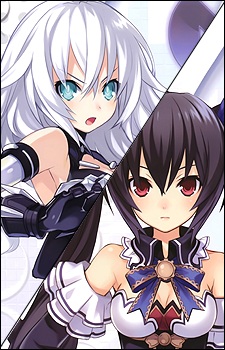
The CPU of Lastation, Noire is the tsundere of the series. Do I have to explain what a tsundere is? I think you’re getting into the wrong series if you don’t know that term.
… I should do it anyway?
Fine…
A tsundere is a character that seems unlikeable at first. They’re abrasive, hate being told they’re wrong, and seem unhappy to be around the rest of the cast most of the time. However, as the story progresses, tsundere characters open up their true feelings. Noire’s tsundere personality is usually the target of Neptune’s teasing, but the two CPUs are close friends. Noire loves the fact that Neptune pays attention to her. Noire is responsible and hard-working, which does cause her to clash with Neptune’s easygoing personality. Her CPU form, Black Heart, drops the tsundere personality and is generally more abrasive.
Blanc/White Heart (Represents the Wii)
Japanese VA: Kana Asumi, English VA: Wendee Lee.
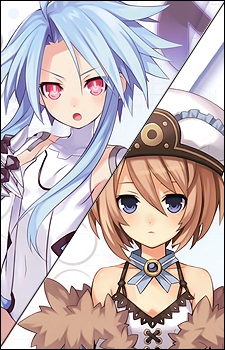
The CPU of Lowee, Blanc is generally quiet and reserved. She loves reading books and spending time writing various fan-fiction online. However, she is also quick to anger and becomes way more aggressive than any other CPUs. Most of her anger is directed towards Vert, who often makes fun of her for being small… in more ways than one. When she becomes White Heart, she is almost constantly angry and swears like a sailor. After the first couple of games, Compile Heart softened White Heart since fans disliked her personality. I felt the same way about White Heart, but I think they have the right balance for her now.
Vert/Green Heart (Represents the Xbox 360)
Japanese VA: Rina Satou, English VA: Tara Platt (2011-2015)/Carrie Keranen (2016-present).
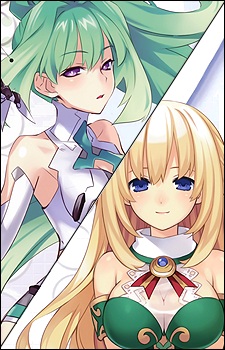
The CPU of Leanbox. Vert is the most mature of the CPUs, with a physique to match. She likes to think of herself as the “older sister” of the cast and one of her wishes is to have a younger sister she can dote on. Vert is the biggest ‘otaku’ of the group as she spends most of her days lounging around playing various MMOs, otome games, and keeping her home filled top to bottom with collector’s editions. As such, Vert gets along really well with Neptune. The two of them prefer to spend their time gaming instead of governing. Green Heart is more or less an extension of Vert.
Compa
Japanese VA: Kanako Sakai. English VA: Cristina Vee.
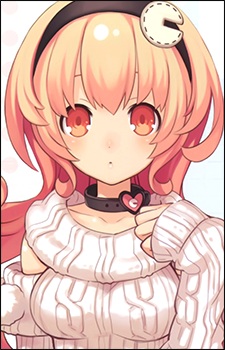
Compa is Compile Heart’s representative. Compa is a clumsy nursing student whose dream is to be a full-fledged doctor one day. Unfortunately, most of her methods for healing others is to either wrap them up in bandages like a mummy or to stick them with needles, which usually causes more harm to her patients than anything else. She shares a close bond with Neptune and IF since the three have been together ever since Neptune fell from “the heavens.” Due to her clumsy nature, she often stumbles on names, so she usually gives nicknames to anyone she’s close to.
IF
Japanese VA: Kana Ueda. English VA: Kate Higgins.
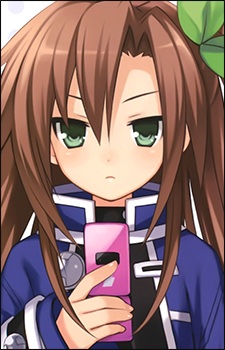
IF (pronounced by separating the two letters) is Idea Factory’s representative. She works at the guild in Planeptune. A girl with a no-nonsense attitude, she is often the straight man to Neptune and Compa. However, she does care deeply for her friends, as shown on multiple occasions where she defends Neptune, Compa, and Nepgear from various attacks, willing to sacrifice herself if needed. IF is usually the only Maker character to break into the top spots on popularity polls, alongside Falcom.
In 10 years, the series has released 19 games. Three are Japanese-only mobile or crossover games. One of them, VVVtunia (to be localized here as Neptunia Virtual Stars), will be coming early next year. I am focusing on games that have been localized here so far (15 games) and will try to keep each entry brief. Aside from the main games, I’m listing games I personally recommend you try as someone looking to get into the series.
The Original Trilogy (2010-2012)
The original Neptunia trilogy (Hyperdimension Neptunia, Hyperdimension Neptunia mk2, Hyperdimension Neptunia Victory) was released on the PS3 in successive years. These games set the foundation for the series but also experimented to see what would work best for the future. In the end, the dev team decided on a mix of attributes from mk2 and Victory to make future games in the ‘main’ series. This is also the group of titles with the most references to the video game industry. Mega Man creator Keiji Inafune’s appears as an NPC who gives you tips and replaces Nepgear’s sword in some special attacks. A multitude of characters also appear (Gust, Nisa [Nippon Ichi Software], Cave, Falcom) as representatives of their respective companies, lending their assistance to Compile Heart in development. Not to mention the many references made across the industry as a whole: Monster Hunter avatars, a “Player 1” NPC dressed as Mario, an NPC who was clearly Master Chief, and so many more. The main villain in the original trilogy, Arfoire, refers to the R4 chip used for pirating DS games. Piracy is the enemy of all the nations, especially in the second game where the CPUs have lost their power due to people only playing pirated games.
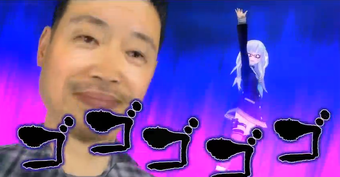
Hyperdimension Neptunia (2010, PS3)
You may have noticed the original Hyperdimension Neptunia was left out of earlier discussion of the dev team taking aspects of the original games to move the series forward. Let me tell you why.
This. Game. Is. Terrible.
The original Hyperdimension Neptunia is, quite simply, one of the worst RPGs I’ve ever played in my life. It may even be one of the worst games I’ve ever played in general. Its glacial combat, bland dungeons, and awful frame rate coalesced into a murky mess of a game that I dropped before I hit double digits in hours played. This game was also the last one that featured Tsunako’s older art style, which she would later refine to create the art that she’s well-known for today. I like to think even Compile Heart acknowledges how bad the original game was since the story is self-contained and not related in any way to mk2. Even the allure of big-name voice actresses like Rie Tanaka (Mitsuru from Persona 3), Asami Imai (Kurisu Makise from Steins;Gate), and Rina Satou (Makoto from Persona 5) wasn’t enough to get me to keep playing.
Fun fact: This is the only game in the series to feature the “console wars.” Neptune gets kicked out of the heavens by the other CPUs, and this begins the trend of Neptune falling from the sky into other worlds.
Recommended: No. Just… no.
Hyperdimension Neptunia mk2 (2011, PS3)
I often mention voice actors, especially notable Japanese ones, in my reviews, since they can be marketed and sold to potential players. Japan does it often, as fans of that voice actor will sometimes follow them to certain games. I’m sure that was the case sometimes when they announced Hyperdimension Neptunia mk2. This sequel features a brand-new cast of main characters, with the original cast in a supporting role. This time, the CPUs’ younger sisters (CPU Candidates) represent the handheld consoles and take center stage. mk2 stars Nepgear, Uni, and the twins Rom and Ram. Nepgear is voiced by Yui Horie (Chie from Persona 4), one of the biggest names in Japanese voice acting at the time. When I first played mk2, she was my favourite Japanese voice actor and I loved her role as Nepgear. She is one of the best-developed characters in the series. Her growth from a traumatized girl afraid of doing anything for fear of messing up to a confident person ready to take on whatever comes her way is still inspiring to me. To this day, Nepgear is my usual profile pic on social media.
As for the game itself, I don’t know if I can recommend it at this time because of updates and remakes. So no, it’s not because of the infamous Conquest ending where Nepgear kills the entire cast. Nope, didn’t happen. That ending isn’t real. It’s not real… IT’S NOT REAL!
… sorry. Anyway, this game is where the main Neptunia story begins, continues in Victory, and through to Megadimension Neptunia VII.
Fun fact: This is the only Neptunia game to receive a Mature rating in North America due to its highly suggestive sexual language and CG scenes. This game is probably what gave the series its bad name among critics.
Recommended: No.
Hyperdimension Neptunia Victory (2012, PS3)
Did you know that Nobuo Uematsu, the composer of all of your favourite Final Fantasy themes, once created music for the Neptunia series? Let me introduce you to Hyperdimension Neptunia Victory. He didn’t create the entire soundtrack of Victory but did make some excellent contributions. “Purple Heart’s Theme,” composed by Uematsu, is still probably my favourite piece of Neptunia BGM to this day. Kenji Ito of SaGa and Mana fame also lent his assistance to the soundtrack. Compile Heart brought on a couple of other big Japanese voice actresses for this game: Aoi Yuuki (Futaba from Persona 5) as Peashy, fresh off her breakout performance in the extremely popular anime series Puella Magi Madoka Magica, and Kana Hanazawa (Chiaki Nanami from Danganronpa 2) as Plutia/Iris Heart. She is still probably one of Japan’s most well-known talents, as she has dominated popularity polls from the late 2000s all the way to the present day. Her performance as Plutia, and especially as the CPU Iris Heart, is still one of my favourite performances. She usually gets typecast into sweet, innocent girls due to her soothing voice; Plutia is one of those types, but her performance as the sadistic Iris Heart got me to re-evaluate how good she is. As Plutia and Iris Heart slowly start to blend their personalities (and Plutia starts getting a bit of a sadistic streak), the way Plutia’s voice drops at times sends chills down my spine.
Fun fact: This game brought in a representative for Atari (Rei Ryghts) and Hudson, who developed the Turbografx-16/PC Engine (Peashy).
Now, I don’t recommend playing through any of the games in the original trilogy these days. That’s mostly because of…
Remakes, Spin-offs and an Anime (2013-2015)
These are likely the games you think of when Neptunia comes up. And you would be right. Nine(!) games released in these three years, and I’m sure this is when Compile Heart made bank. I believe the hype for Neptunia started when the anime aired in July 2013. For many people who didn’t have PS3s, the anime was their first exposure to the series. Its popularity was probably helped by David Production, the studio behind the popular JoJo’s Bizarre Adventure series. The anime also presented a chance to display the series’ serious voiceover talent, to the point where, again, people watched it because of the acting. If you want to hear my brief thoughts about Hyperdimension Neptunia: The Animation, check out our feature on it.
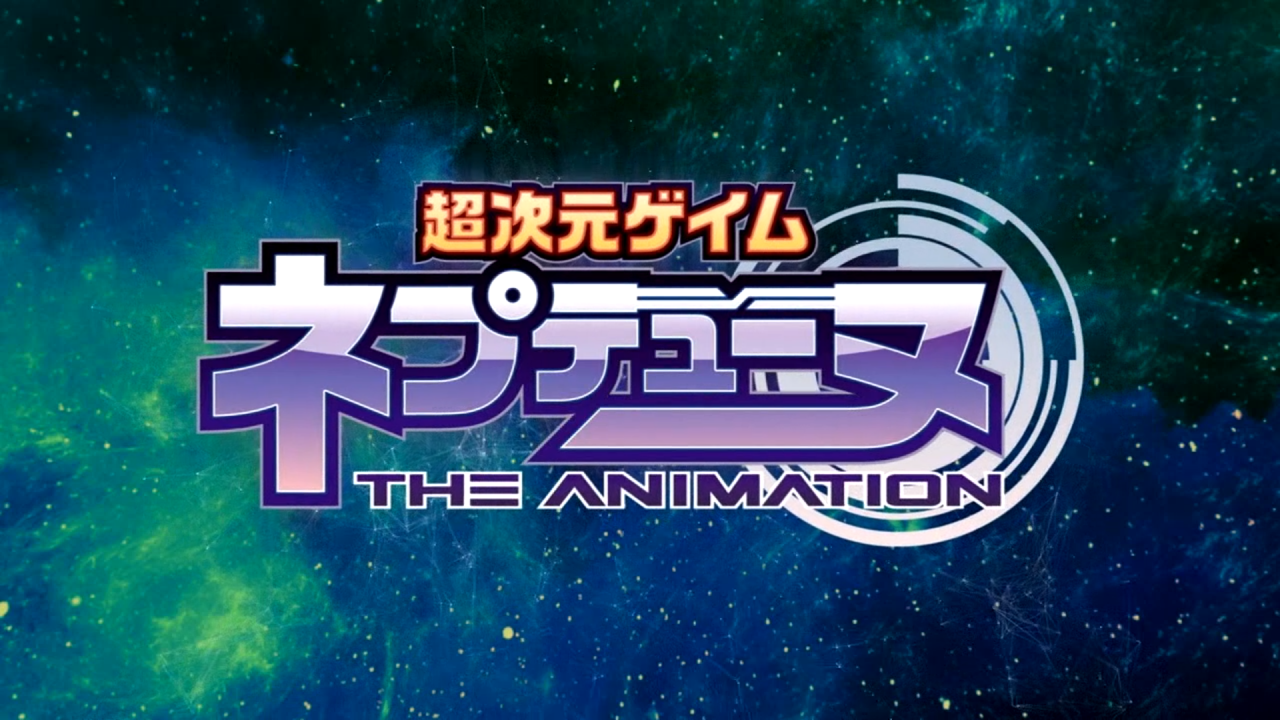
While Compile Heart worked on the next mainline game, they had multiple other developers working on the series, including remakes of the first three games. So, let’s dive in!
The Re;Birth Games (2013-2014/Vita, PC)
The Hyperdimension Neptunia Re;Birth games (1-3) are remakes of the original game, mk2, and Victory. These games feature the same story from their original versions with some slight alterations. Some characters featured in the original games’ stories, like Gust and Nisa, are replaced by new characters like Broccoli and Red. Re;Birth1 also amends some side content so that the CPU Candidates are playable. They also feature the new battle system that combines mk2 and Victory‘s battle systems. The battle system is nothing to write home about, but it works. If you’re looking to get into the Neptunia series, this is where I would begin. These games are a lot better than their original versions, and since these games are on PC and Vita, they’re a lot more accessible to everyone than the original games on PS3.
Fun fact: Even though mk2 had a Mature rating, Re;Birth2 sports a T rating despite few changes to the original script. It even includes a CG scene that was removed from mk2 for being too lewd, I believe. I guess they figured if it happened in the anime, might as well include it in the game for the re-release.
MegaTagmension: Blanc + Neptune vs Zombies (2015/Vita, PC)
Another popularity poll occurred in 2014 to determine the favourite Neptunia character. This time, Blanc came out on top, though there were allegations of unfair voting and cheating. Despite this, Compile Heart and Idea Factory took this feedback, and they tapped Tamsoft once again to help with development. Around this time, there was also a Neptunia light novel series featuring high-school versions of the characters, because why not? For MegaTagmension, they decided to place the light novel setting into the game, but with a zombie invasion. Since Blanc is the protagonist (sharing the role with Neptune) and loves writing scenarios, she gets the fantastic idea of shooting a zombie apocalypse movie during the zombie invasion. Yeah, this game’s premise is silly, but I wouldn’t have it any other way for this series. The gameplay here is like its predecessor Action Unleashed, but Tamsoft did away with the clothes breaking. Fine by me, since I could finally use heavy attacks without worrying about damaging the clothes/armour.
I did like this game quite a bit as it delivered on some high-quality cheese with its writing, the gameplay was solid for a hack n’ slash, and getting to play director with who you chose for each “scene” was a nice touch. If you want to get into one of the action games, I would recommend this one over Action Unleashed. Unless you don’t like Blanc. Which is rude.
I’m a Nintendo fan, by the way. No bias at all.
Megadimension Neptunia VII: The Last Mainline Game? (2015)
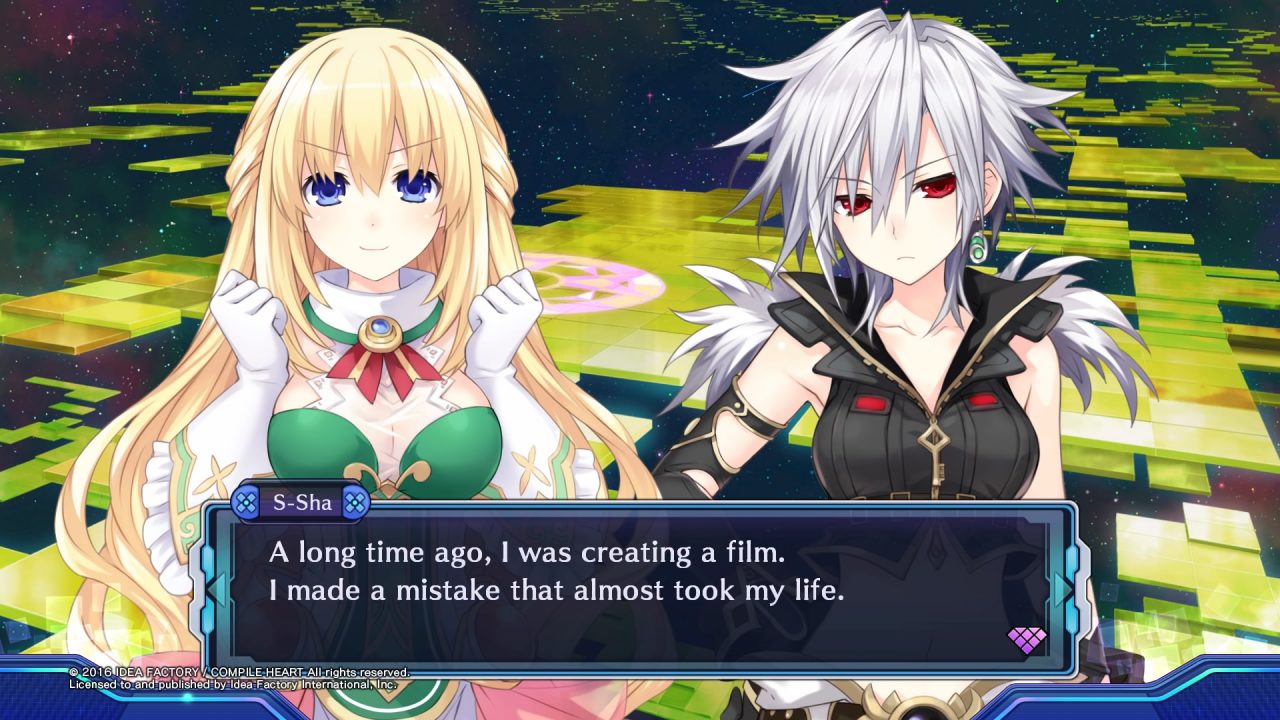
As of this feature, Megadimension Neptunia VII is the last of the mainline games in the series. There was an announcement about a Neptunia game titled Go! Go! 5D Neptunia: ReVerse in August 2020 with a PS5 release sometime in the future. Sadly, this is a remake of Re;Birth1. Megadimension Neptunia VII had an interesting development since the devs had three different ideas for what the next Neptunia game should be. In the end, they decided to combine the three ideas into one game with three different story arcs.
Megadimension Neptunia VII is a beefy game with many new features that haven’t been in the series before. The game also runs at 60 frames per second with really nice-looking models and backgrounds. It felt like Compile Heart finally got things right with this title. It’s a fairly solid game overall, even removing my Neptunia bias. My only issue with the game is that it is grind-heavy and may require you to spend a lot of money on healing items to make it through some of the longer dungeons.
Megadimension Neptunia VII is easily one of the most accessible Neptunia games, available on PS4, PC, and digitally on Nintendo Switch as of July 2020.
Recommended: Yes
I Heard You All Liked Spin-Offs: (2017-present)
After taking a break in 2016, Neptunia fans assumed a new mainline game was in the works. However, that was not the case. While the series would resume in full force in 2017, there wasn’t a mainline game announcement. Instead, the series would resume making spin-offs, this time expanding onto mobile devices as well. From this point onward, you’ll be able to see my thoughts on the Neptunia games that have come out in the West since then, as I have reviewed them for RPGFan (except for Neptunia Shooter). Seven games have released in this time period, but I can only discuss four of them since two of them are Japan-only, and one hasn’t released here yet.
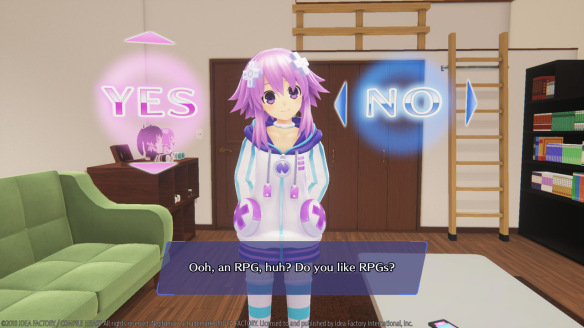
Cyberdimension Neptunia: 4 Goddesses Online (2017/PS4, PC)
This game is based on the oft-mentioned MMO in the series, 4 Goddesses Online. Vert mentions playing it often, and it’s mentioned in the anime as well. The third action game in the series developed by Tamsoft, this one ditches the hack n’ slash style of laying waste to multiple enemies for a more action RPG format. This game is also different in the way that it ditches some of the characters’ usual playstyles for different ones. Blanc, the hard-hitting girl with the sledgehammer, trades it for a staff to heal the rest of the party. Nepgear trades in her usual sword for a wand, and the twins swap their wands for swords and daggers.
I’m a fan of this game mostly because it showcases Neptunia at its best: when the game is light-hearted and fun. That’s not to say I don’t appreciate it when the series dives into darker themes like in mk2/Re;Birth2 and VII. However, as a parody series, it’s always better when things aren’t taken super seriously. If you want to hear more of my thoughts on Cyberdimension Neptunia, you can check out my review.
Recommended: Yes
Fun fact: Since we’re talking MMOs in this game, it makes sense that the devs would reference the works of Reki Kawahara, the author of Sword Art Online and Accel World. This game features a dual sword-wielding character named Kiria, who is definitely not a reference to Kirito from Sword Art Online, and Kuroneko-hime (Black Cat Princess), whose name is a reference to Accel World’s Kuroyuki-hime.
Megadimension Neptunia VIIR (2018/PS4, PC)
A remake of Megadimension Neptunia VII, this game featured new VR scenes where you can interact with the CPUs as they travel through dimensions to our world. This game is played through a record book in your room that recounts Megadimension Neptunia VII. The main novelty of this game is the ability to interact with the CPUs as they visit you. You can play this game without a VR headset as well, which is how I played it, but I imagine it’s way better in VR.
Compile Heart did introduce quality of life changes to the original game like full healing after combat and a new way to earn “bonus points” to spend towards various skills and stats. They also changed the battle system from VII, but I personally wasn’t a fan. The DLC released for Megadimension Neptunia VII is also available in this release, but most Neptunia DLC is end-game content anyway.
I personally believe that you could pick this game or the original game and either would be fine. This game isn’t enough of an improvement over the original to justify paying more. That being said, VIIR is still the best game in the Neptunia series, and this gets my full recommendation. For more of my thoughts on it, my review is here.
Recommended: Yes
Fun fact: This is the first game where the characters openly break the fourth wall to talk directly to you, the player, referenced in the game as the “person who helps them” from another world.
Conclusion
I hope that gave you a general idea of what to expect from the Neptunia games throughout its history. The Neptunia games are mostly silly fun, and none of them are masterpieces, but if you find that you enjoy hanging out with the series’ quirky cast of characters, I think you’ll find yourself a Neptunia fan before long. It certainly isn’t for everyone, but those willing to give it a shot for a quirky time will probably find something here that they like.
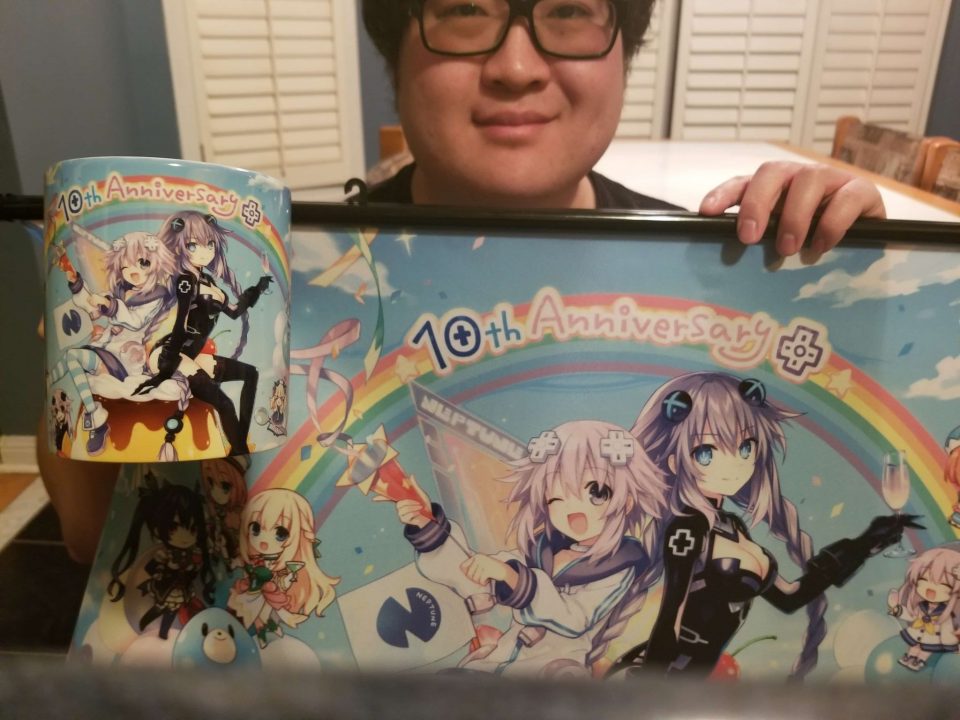
Partial Source: Kotaku

